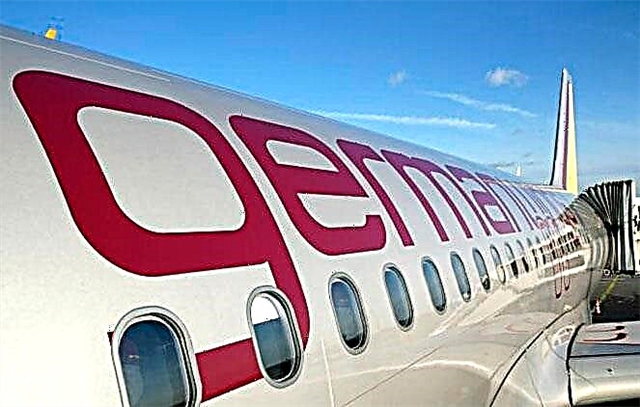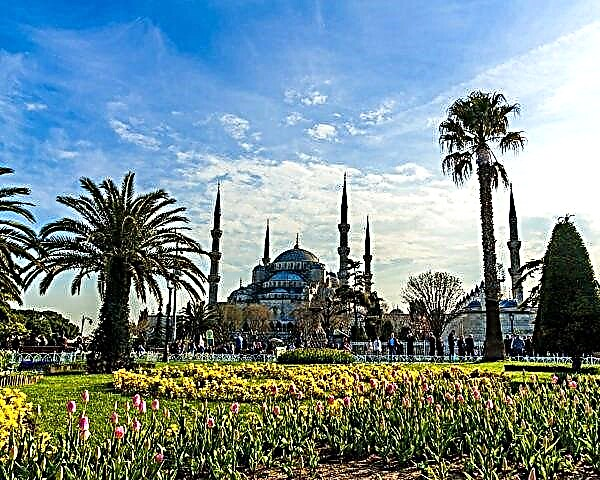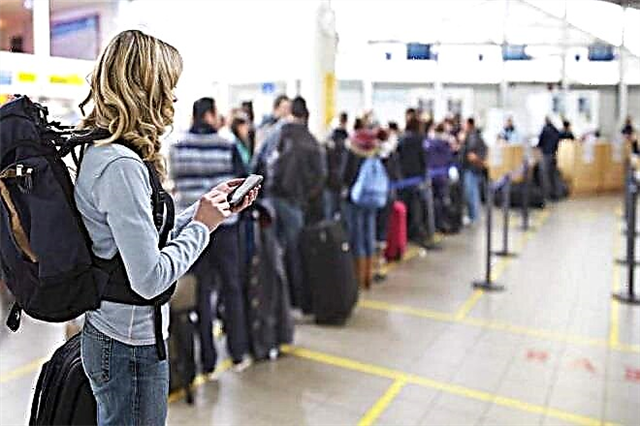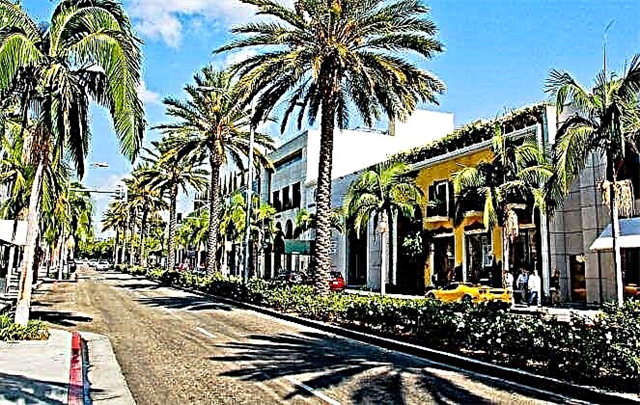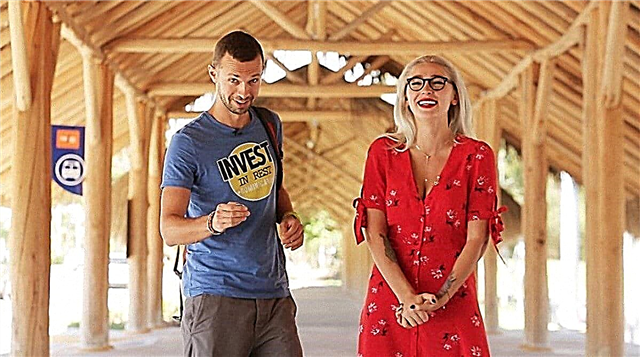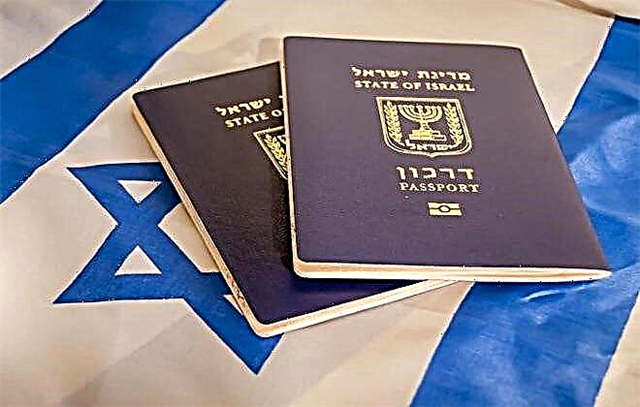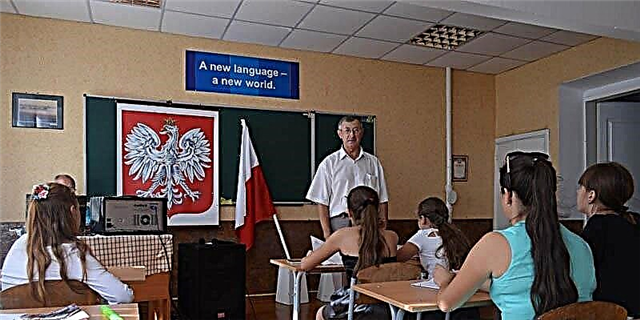School education in Poland is considered one of the most progressive among the countries of Eastern Europe. If you live and work in this country, a Polish school will provide your children with quality European education.

School education in Poland
The education system in Poland is known for high educational standards, the use of European innovative principles and accessibility for everyone, including foreigners. She is constantly improving.
In 2021, an educational reform began in the country, which will last until 2021 and will help children gain knowledge even more effectively.
Education in Polish schools begins at the age of 6-7, depending on the child's readiness.
Before school, children must complete a compulsory preparatory course in kindergartens or elementary schools throughout the year. This is the so-called zero grade, or zerówka.
You can get information about the conditions of admission to kindergarten and the cost of the service, about food and arrangement of work in general by reading the article “Kindergartens in the Polish Preschool Education System”.
Children learn to read, write, count, draw and come to grade 1 with a certain set of knowledge and skills. Then training takes place in a basic school (8 years) and continues in a senior (4 years). In total, children study for 12 years and by the age of 19–20 they receive a matura certificate, which entitles them to admission to a higher educational institution.
Read about the advantages of the education system in Poland in the article "Features of the Polish educational system".
Types of Polish schools
School education in Poland can be obtained in different types of educational institutions.
The state ones are under the jurisdiction of the Ministry of Education and are financed from the country's budget. Training in them is free. Children are admitted to public schools on a territorial basis; instruction is in Polish.
For admission to private educational institutions, entrance exams are possible. Study here is paid.
Public schools are organized with the participation of parents and public organizations for certain types of targeted education, for example, the study of the language and culture of national minorities living in Poland. Tuition is paid, but by decision of the school management, it is possible to provide various benefits and scholarships.
Instruction in private and public schools can take place in Polish or other languages.
Basic School (Szkoła podstawowa)
Education in a basic school is compulsory for all children who live in Poland, regardless of their citizenship.
Parents are obliged to send the child to first grade no later than the calendar year in which he turns 7 years old. Failure to comply with this rule entails fines and various sanctions, up to and including deprivation of parental rights.
The basic school (Szkoła podstawowa) is divided into primary and secondary schools. In elementary school, children study from grades 1 to 6, in secondary - from 7 to 8.
Until 2021, in Poland, it was planned to study at a gymnasium, in which children received secondary education after grade 6. But as a result of the reform, the gymnasium stage was included in the general basic education.
The list of compulsory subjects that are studied in Polish basic schools includes:
- Polish language;
- English (from grade 1) and second foreign (from grade 6);
- mathematics;
- physics;
- chemistry;
- biology;
- history;
- social Sciences;
- informatics;
- music;
- art;
- technology (analogue of labor lessons in schools of post-Soviet countries);
- physical education.
There are also subjects that the child studies only with the consent of the parents. These are religion and ethics (from grade 1) and a course on preparing for family life (from grade 5).
Initial
In grades 1-3 of public schools, children are taught in a playful way in order to interest them in acquiring new knowledge. Pupils master the Polish and English languages, arithmetic, natural history, drawing.
Much attention is paid to physical development. There is no clear division into subjects, the training program is complex.
Lessons on the main topics are taught by one teacher, who is also the class teacher. Classes in foreign languages, music and physical education are taught by professional teachers.
The basics of religion and religious ethics are taught as an option, and it is not necessary to attend lessons in this subject.
Grades are not given to children in the first three years of schooling. But the teacher keeps in touch with the parents and gives them written recommendations that help them get an idea of the child's progress.
From grade 4, a division into subjects is introduced into the curriculum, each discipline is led by a specific teacher. Children begin to receive grades in accordance with the level of knowledge.
After the end of the 6th grade, testing is carried out, which allows you to determine the level of assimilation of the material by each student. At the same time, the test results do not affect the child's ability to move to the next stage of education.
Average
Secondary school includes grades 7 and 8, children study here from 13-14 to 16-18 years old. Earlier, after the end of the 6th grade, the child could continue to study in a regular school or enter a gymnasium. But as a result of the reform from 2021, gymnasiums in Poland have been abolished.
The public secondary school program includes, in addition to Polish, the study of two foreign languages. Children learn English from the first grade, the second foreign language can be chosen.
Usually it is German or French, less often - Spanish, Italian or Russian. Since 2021, Ukrainian has been added to the list of second foreign languages taught in Polish public schools.
After graduating from high school, students take an exam, which includes 4 stages. Knowledge of mathematics, foreign language, humanitarian subjects (Polish, history and social studies), natural sciences (physics, chemistry, biology) are tested.
Based on the results of the exams, the prospects for further education of the child are determined and the type of education in high school that is suitable for him is selected.
High School (szkoła ponadpodstawowa)
In high school, teenagers study from 16-17 years old to 19-21 years old. The final stage of schooling takes 3-4 years.
Students choose one of three types of education in high school:
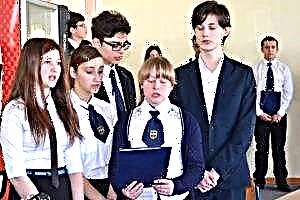 Lyceum. Education includes only general education subjects and may include specialization in the exact, natural, social sciences. Course - 3 years, graduates of the lyceum take exams to obtain a matura certificate.
Lyceum. Education includes only general education subjects and may include specialization in the exact, natural, social sciences. Course - 3 years, graduates of the lyceum take exams to obtain a matura certificate.- Professional schools. Duration of study is 3 years. Pupils receive a professional qualification and a diploma that allows them to work in a mastered specialty, but do not pass the general education exams for a certificate of maturity.
- Technical schools. These educational institutions study for 4 years. Graduates who successfully pass the exams receive a matura certificate, according to which they can enter higher educational institutions, and a professional diploma.
Some students choose a combined study program: they study in a vocational school for 2 years, and then another 2 years in a general education lyceum. This is an opportunity to get both a complete school education and a profession.
Extensive material on the possibility of obtaining professional education for future specialists in the technical sector or the service sector is provided in the article "Police schools for foreigners - the prospect of free education and work in the specialty".
Those who want to continue their studies at universities must successfully pass the exams for a certificate (egzamin maturalny).
Without an official certificate (matura), documents are not accepted in higher educational institutions.
The exam includes compulsory subjects (mathematics, Polish, foreign languages) and others that can be specified. You can also choose the level of testing difficulty - basic (matura na poziomie podstawowym) or advanced (matura na poziomie rozszerzonym).Exams are taken in writing or in the format of an oral presentation, the topic of which is determined by the graduate in advance.
To pass the exam successfully, the number of correct answers must be at least 30%. If this indicator is lower, the graduate will not receive a certificate, and the testing will have to be repeated.
The article “Getting higher education in Poland” will acquaint you with the peculiarities of the Polish system of admission and study at a university.
For foreigners, high school education in Poland is paid. The cost is 1,500 euros for each year of study, and in art schools - 3,000 euros per year.
Take a sociological survey!
Rules and features of Polish schools
Polish schools have adopted an original differentiated grading system. Academic progress is determined by a system of formulas, taking into account various factors.
The main marks are given on a 6-point system, in which 6 is the highest and 1 is the lowest. Grades from 2 to 6 are considered positive, 1 - negative.
In addition to the number of points, the criterion of "assessment weight" (waga oceny) is used in determining the progress. This is a coefficient that determines the complexity of the completed educational work. After taking into account the "weight", all marks are summed up and the average score is derived from them.
In Polish schools, children usually study from 8:00, but some educational institutions work in 2 shifts. Lessons last 45 minutes, breaks last 10–20 minutes.
After the end of the lessons, children can stay in the extended day group (świetlica), which is open from 7:00 to 17:00. There they do their homework, play board games, watch TV, and participate in various additional activities - free of charge or for a small fee (30-50 PLN per semester).
 Schools have lunch and dinner times. For lunch, children bring food and drinks from home with them in special plastic containers.
Schools have lunch and dinner times. For lunch, children bring food and drinks from home with them in special plastic containers.
Lunch in the canteen is paid (PLN 8-10 per day), it includes the first, second course and a drink. School meals are varied and prepared according to the principles of healthy eating.
You need to buy textbooks yourself. The cost of a set, depending on the class, is PLN 200–600 per year. Up to 50 zlotys per year are spent on stationery.
School uniforms are not compulsory in Poland, they are used only in some educational institutions. A vest with the emblem of the school often acts as a uniform. In educational buildings, children wear replaceable shoes.
Schoolchildren are often taken on excursions, they arrange trips to museums or theaters. All these activities are paid separately.
An electronic diary (e-dziennik) is used to communicate with parents in schools. It records attendance or missed classes, grades received, homework assignments, comments and announcements from teachers. Thanks to this, parents are always aware of the child's current school affairs.
Attendance in Poland is strictly monitored. As already noted, children living in the country are obliged to receive school education, regardless of citizenship. If a child of migrants does not go to school or skips school without a good reason, the parents are in serious trouble from social services.
Accident insurance for pupils in Polish schools is compulsory.
Academic year and holidays
In Poland, the school year starts in September and ends on the last Friday of June. Lessons run from Monday to Friday. Saturday and Sunday are days off.
July and August are summer holidays.
 The Christmas holidays run from December 23rd to January 2nd. In addition, children have an additional two-week winter break in January or February. Their dates may differ in different voivodeships.
The Christmas holidays run from December 23rd to January 2nd. In addition, children have an additional two-week winter break in January or February. Their dates may differ in different voivodeships.
Summer and winter school holidays divide the academic year into 2 semesters. There are no autumn holidays, but in the spring about a week is allocated for rest during the Easter holidays.
School ID
Children enrolled in a Polish school receive school certificates (student cards). The document contains the name, surname and date of birth of the child, as well as the data of the school he attends (full name, address). A photo of a student is pasted into the ticket.
The student ID also serves as a form of identification when children take exams or participate in interschool contests. At the beginning of each school year, a stamp is affixed to the ticket indicating that the child continues to study in the same place.
If a student is transferred to another school, he / she will be issued a new student ID.
On a student card, schoolchildren receive discounts on travel in city and intercity transport, on the purchase of tickets to museums, cinemas and entertainment centers.
How to enroll a child in school
Many foreigners from post-Soviet countries come to work in Poland, and they are interested in how to get a child to school. You can enroll your child in a district public school or any other - subject to availability.
First of all, parents need to apply for admission to the educational institution. In addition, it is advisable to provide:
- parent and child identity cards;
- a medical record with a vaccination schedule;
- any document confirming studies in the home country to determine which class to enroll the child in - for students over grade 4.
But even if there are no documents, they will not refuse to admit the child to school.
In the absence of a certificate of education, the child will be interviewed, which will determine the level of his training. If the student does not know Polish enough, an interpreter will be invited for the conversation.
 The conditions for admission to a private school can be found by contacting its official website.
The conditions for admission to a private school can be found by contacting its official website.
Young Ukrainians and Belarusians quickly adapt to the Polish language environment, even without first learning the language.
For Russians and people from other post-Soviet republics, the best option is to send children to Polish schools one grade lower because of the language barrier. For such students in the first year of study, additional free Polish lessons are held twice a week.
Popular schools in Poland where foreigners study
There are international schools in Warsaw, where tuition is conducted in English, German and French on a paid basis:
- The British School in Warsaw offers a 13-year UK program. Address: 02-943, Warszawa, ul. Limanowskiego, 15. Cost - 17190-19438 euros per year, depending on the class.
If the child does not speak English enough for successful learning, the program of language support and additional language training is used (723 euros per semester).
- The American School of Warsaw (ASW) is the oldest English-speaking educational institution in Poland. Address: 05-520 Konstancin Jeziorna, ul. Warszawska, 202.
Registration fee - $ 6,000, payment $ 8,400-9,900 per year.
- The International American School (IAS) uses the world's best teaching methods and issues three certificates to graduates: international, American and Polish.
Address: 02-796, Warszawa, ul. Dembego 18, 02-796, Warszawa Tuition fees 8 630-12 360 euros per year.
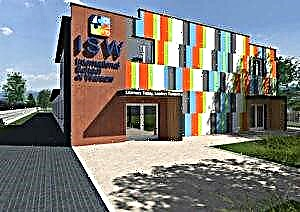 The International School of Warsaw (ISW) offers instruction in two main languages - English and French. Additionally, you can study Polish, Russian, German, Chinese or Spanish.
The International School of Warsaw (ISW) offers instruction in two main languages - English and French. Additionally, you can study Polish, Russian, German, Chinese or Spanish.
Address: 05-502 Bobrowiec, ul. Mazowiecka, 43, Warszawa. Tuition fees are 7,230–11,078 euros per year, registration fee is 700 euros.
- At the Willy Brandt German-Czech School, children study in German. Knowledge of German is not required for admission to the international department. Address: 02-972 Warszawa, ul. Św. Urszuli Ledóchowskiej, 3.
Registration fee for the German department is 1400 euros, for the international department - 466, tuition fees - 5 597 euros per year.
- Lyceum Francais de VARSOVIE includes kindergarten, school and college, after which students receive an international bachelor's degree. Education is conducted in French according to French educational standards, Polish and English are also studied.
Address: 02-942 Warszawa, ul. Konstancińska, 13. Tuition fee - 4 844 euros per year in primary school and 6 954 - in secondary. Registration fee 443 euros.
All issues related to education in Poland - from kindergarten to university - for citizens of other countries are covered in the article "Study in Poland: conditions and opportunities for foreigners in 2021".
The most common option for foreign educational institutions in Poland is a school for Ukrainians. Ukrainian educational institutions are usually opened on the basis of Polish schools as additional subdivisions. There are several hundred schools in Poland where Ukrainians can study and communicate in their native language. Classes are free, creative programs provide a small fee - up to 70 PLN per month.
The most popular Ukrainian schools:
- Warsaw:
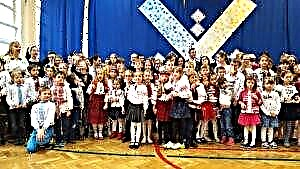
- No. 221, ul. Ogrodowa 42/44;
- XII Lyceum named after Henryk Sienkiewicz, ul. Sienna 53, 00-820 Warszawa;
- school "Materinka" (teaching in Ukrainian according to the standards of the Ministry of Education and Science of Ukraine), ul. Raszyńska, 22;
- Gimnazium 20, Warszawa.
- Poznan: no. 7, os. Zwycięstwa 101, 61-643 Poznań.
- Szczecin: No. 47, ul. Jagiellońska 59, 70-382 Szczecin.
- Lublin: Spółdzielczości Pracy 3, Lublin, al. Warszawska 71, Lublin.
- Krakow: ul. Strąkowa 3A, 30-410 Kraków, al. Kijowska 3.
- Wroclaw: ul. Mennicza 21-23, 50-057 Wrocław.
- Przemysl: ul. Smolki 10, 37-700 Przemyśl.
- Bialystok: ul Waryńskiego 30, 15-461 Białystok.
- Gdansk: ul. Aksamitna 8, 80-858 Gdańsk.
Russian schools in Poland
Russian schools are not very common in Poland. If you want your child to study in Russian while living in Poland, you will be helped by:
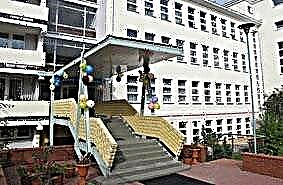 School at the Russian Embassy. Located at: 02-530, Warsaw, st. Keletskaya, 45. Education here takes place according to the Russian educational program.
School at the Russian Embassy. Located at: 02-530, Warsaw, st. Keletskaya, 45. Education here takes place according to the Russian educational program.- XIII General Education Lyceum with Bilingual Education. Colonel Leopold Lis-Cooley. Address: 03-503, Warsaw, st. Oshmianska, 23/25.
Public organizations have schools and courses for distance learning in Russian.
The material on other opportunities for learning the Polish language is presented in the article “Effective Polish language courses in Poland for Russian speakers”.
The main differences between the Polish school and the Russian
Education in a Polish school lasts longer than in a Russian one. Significant differences are observed in the curriculum for elementary grades, in the level of learning foreign languages.
But the main difference is in the high school curriculum. Russian high school students study at their home school for the last two years before receiving a certificate, and Polish ones during this period are already determined with a professional orientation.

 Lyceum. Education includes only general education subjects and may include specialization in the exact, natural, social sciences. Course - 3 years, graduates of the lyceum take exams to obtain a matura certificate.
Lyceum. Education includes only general education subjects and may include specialization in the exact, natural, social sciences. Course - 3 years, graduates of the lyceum take exams to obtain a matura certificate. The International School of Warsaw (ISW) offers instruction in two main languages - English and French. Additionally, you can study Polish, Russian, German, Chinese or Spanish.
The International School of Warsaw (ISW) offers instruction in two main languages - English and French. Additionally, you can study Polish, Russian, German, Chinese or Spanish.
 School at the Russian Embassy. Located at: 02-530, Warsaw, st. Keletskaya, 45. Education here takes place according to the Russian educational program.
School at the Russian Embassy. Located at: 02-530, Warsaw, st. Keletskaya, 45. Education here takes place according to the Russian educational program.
